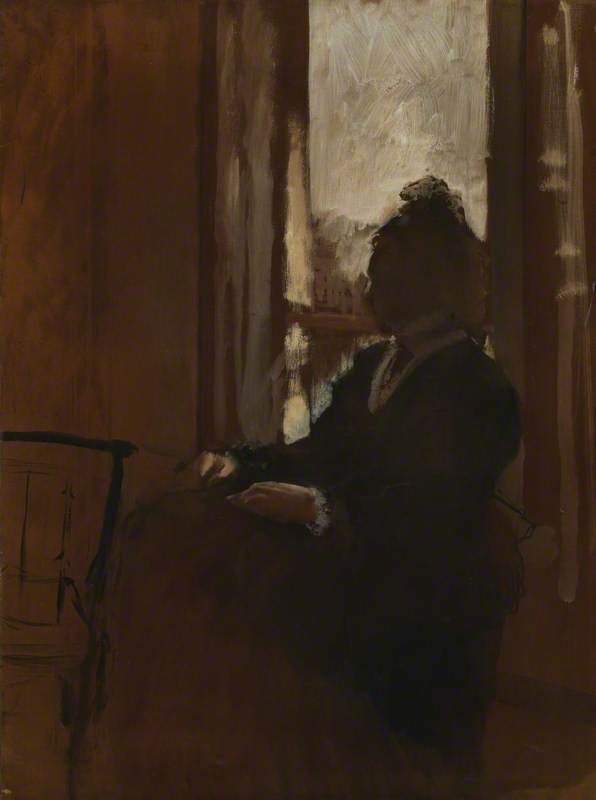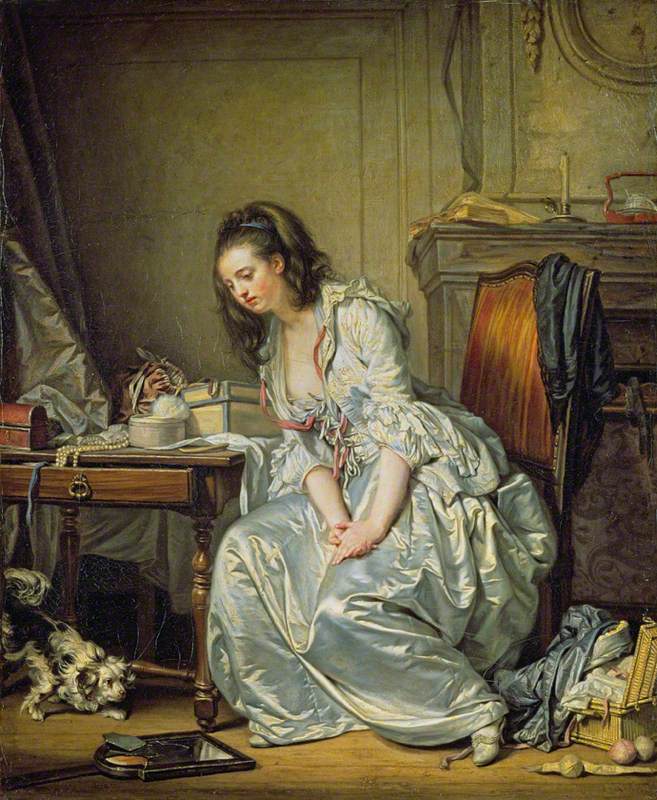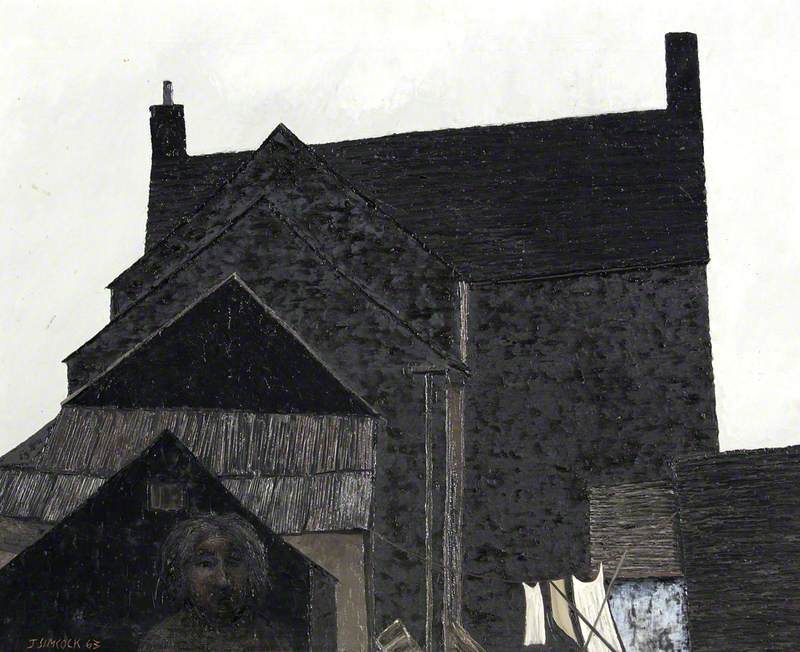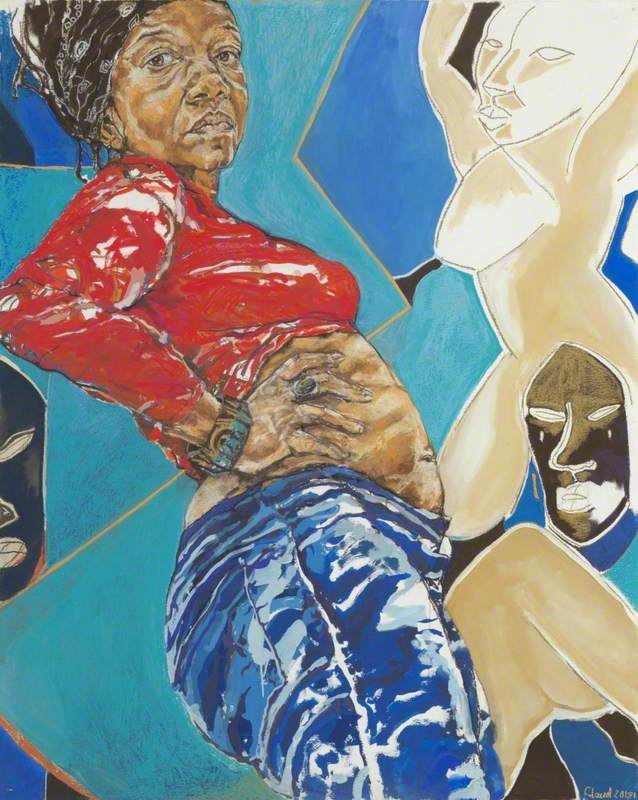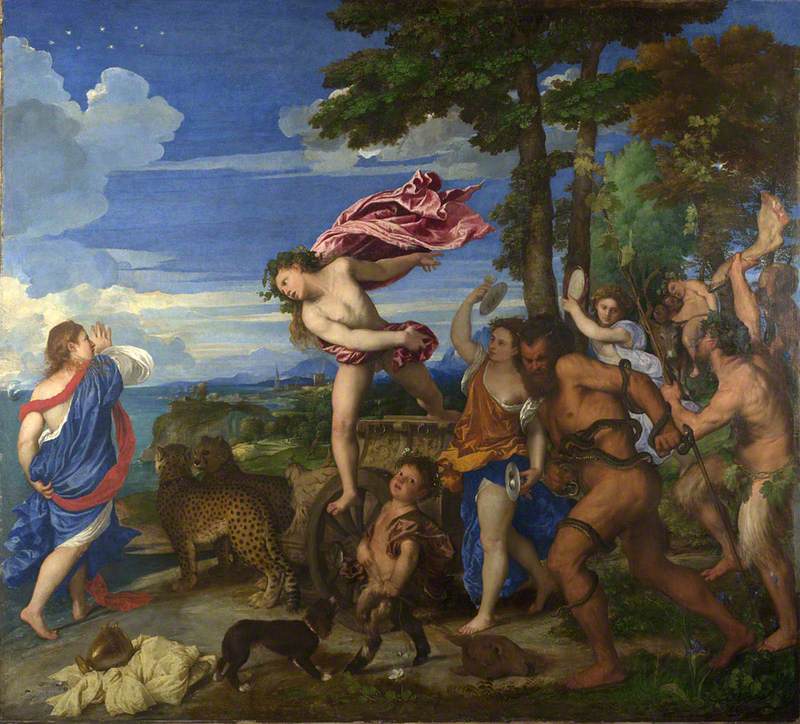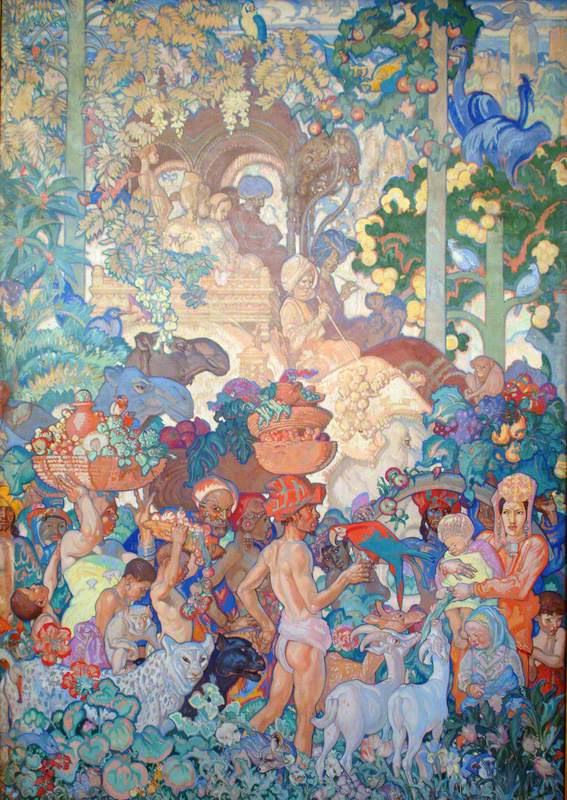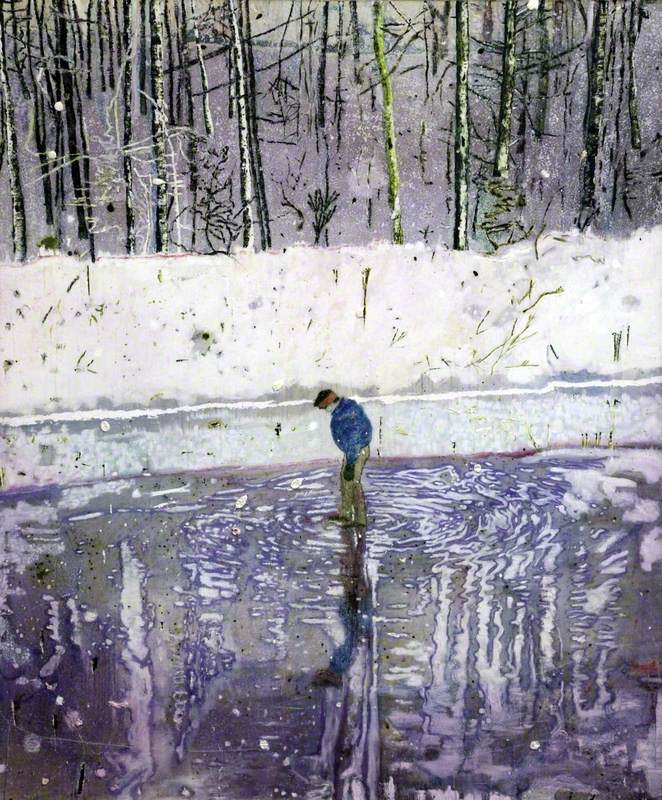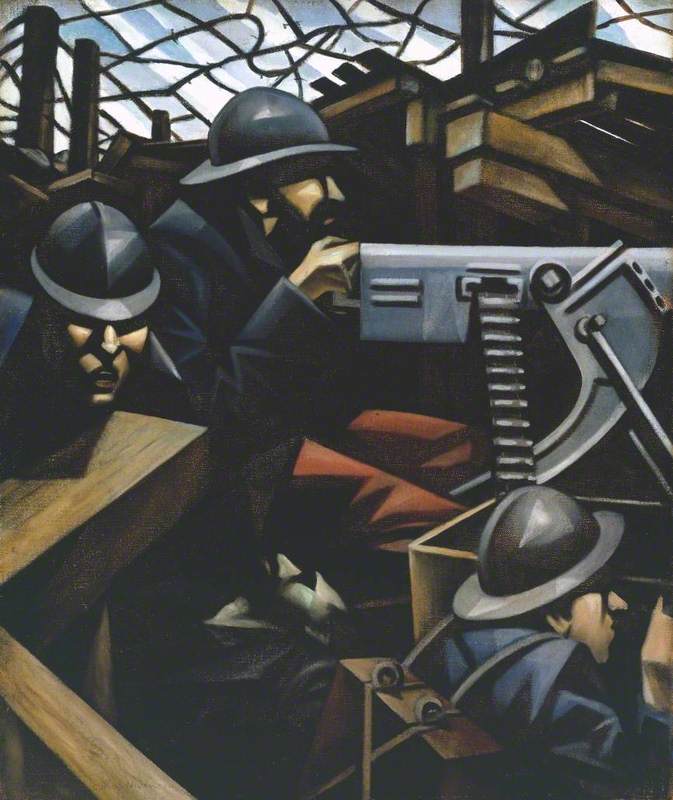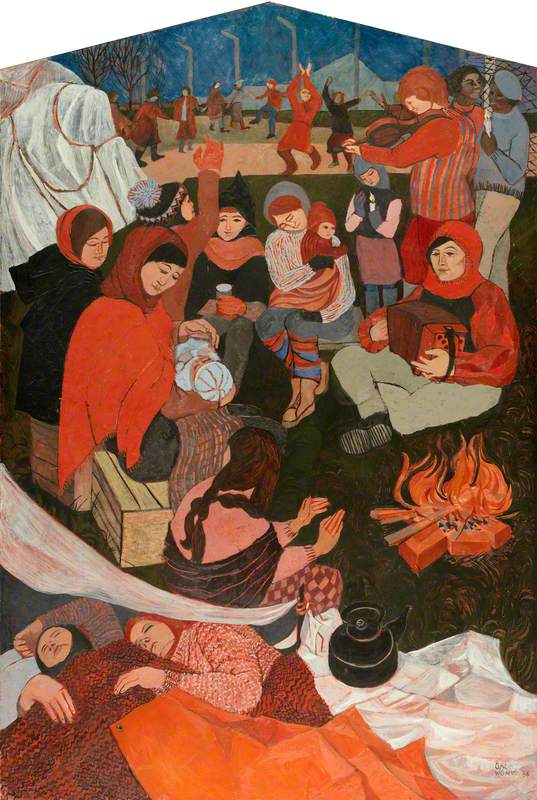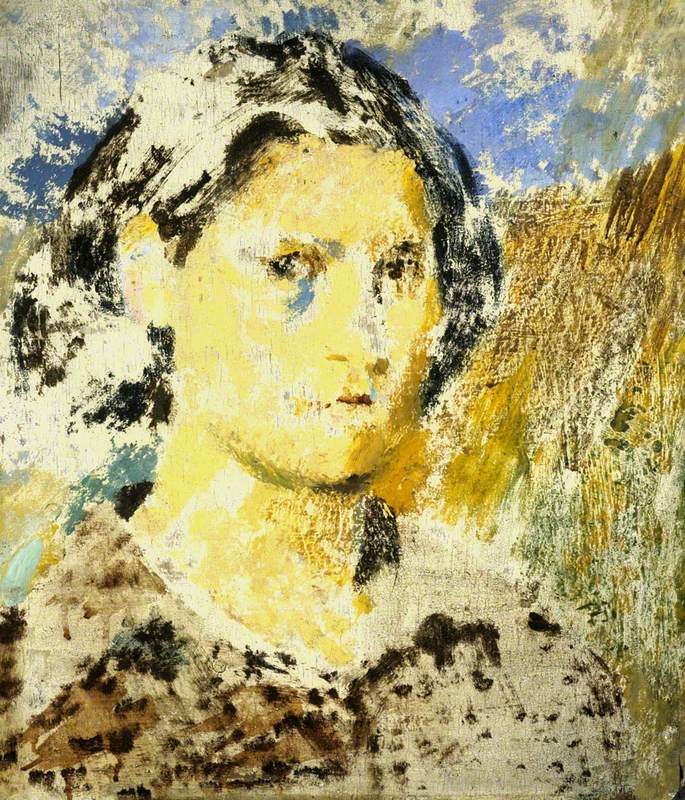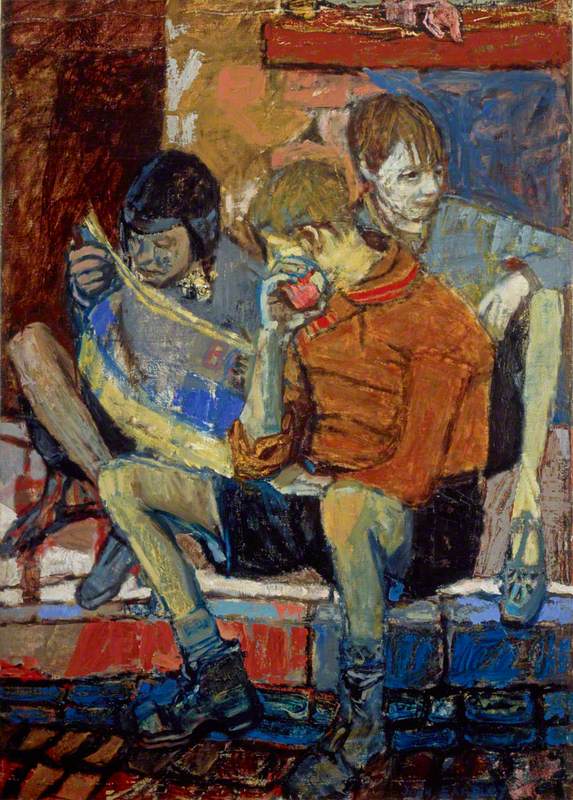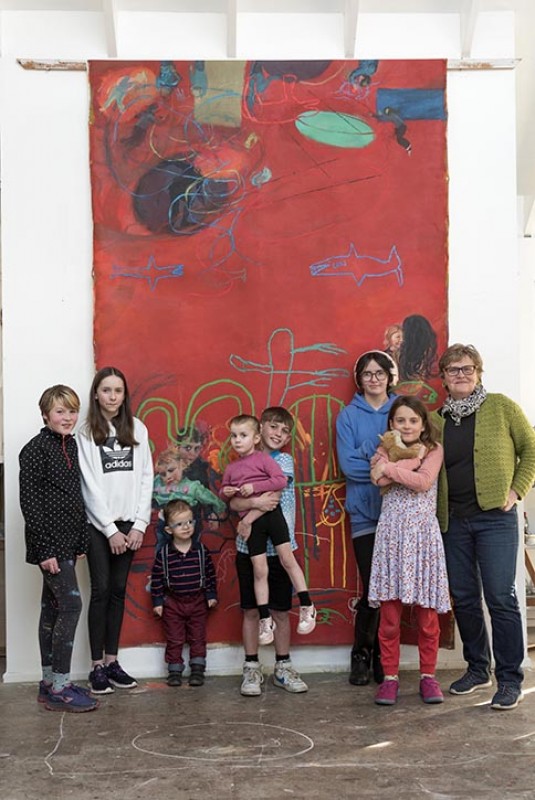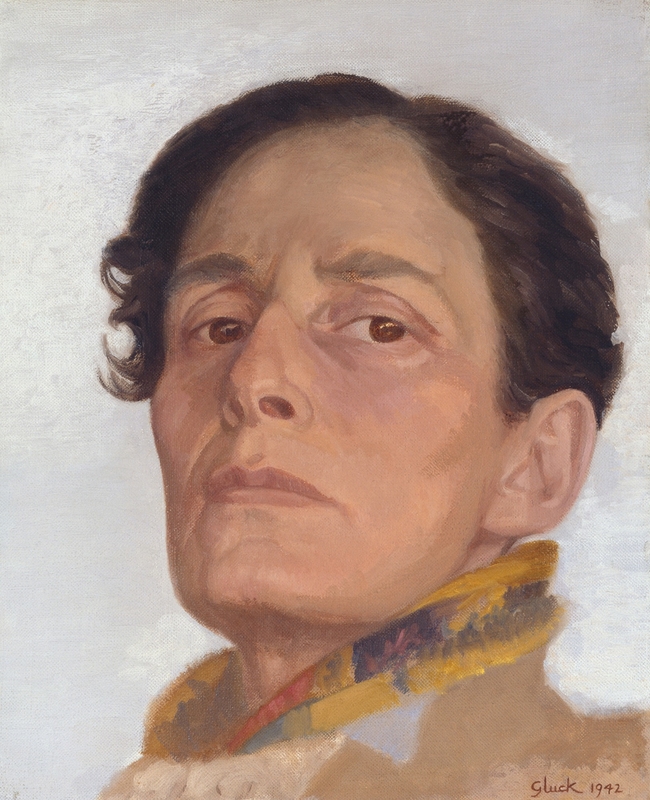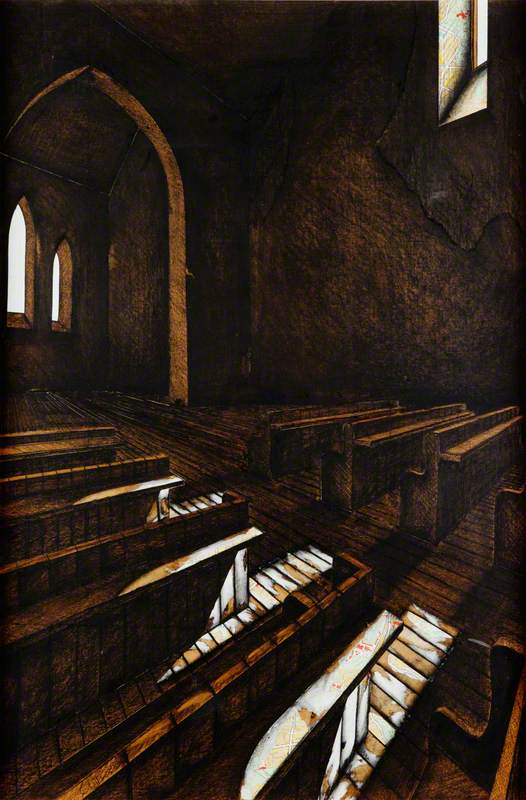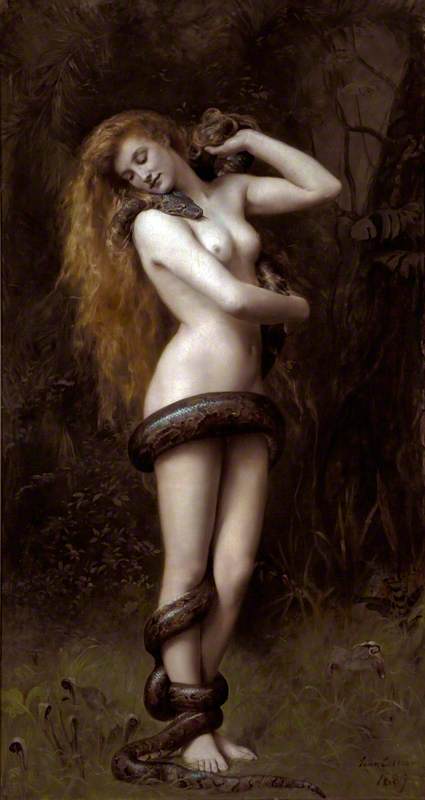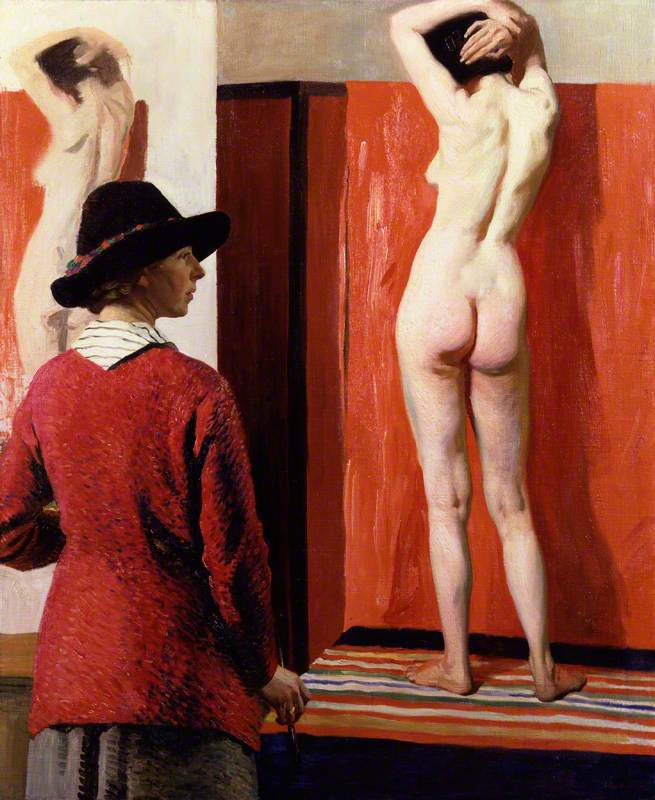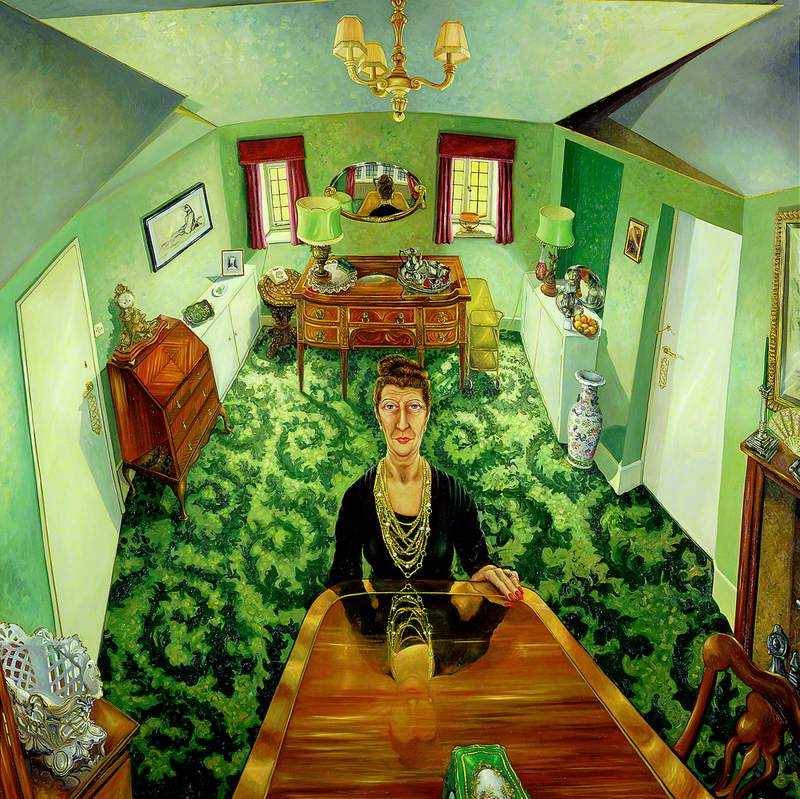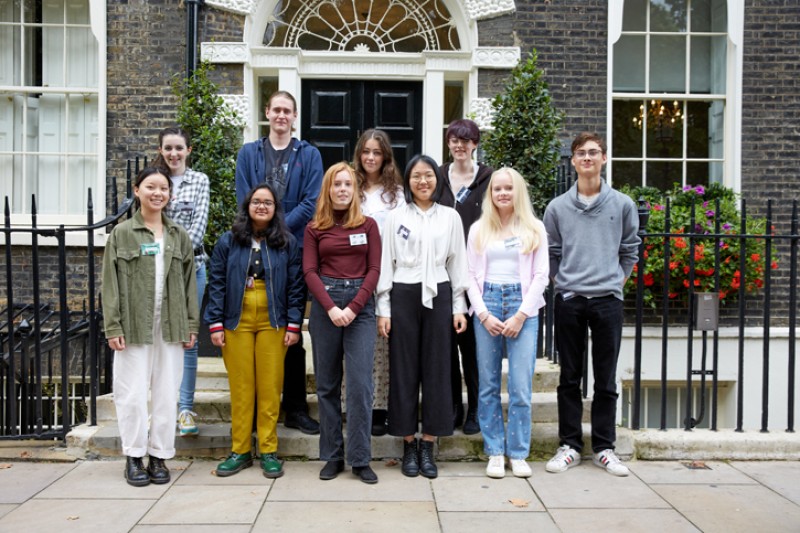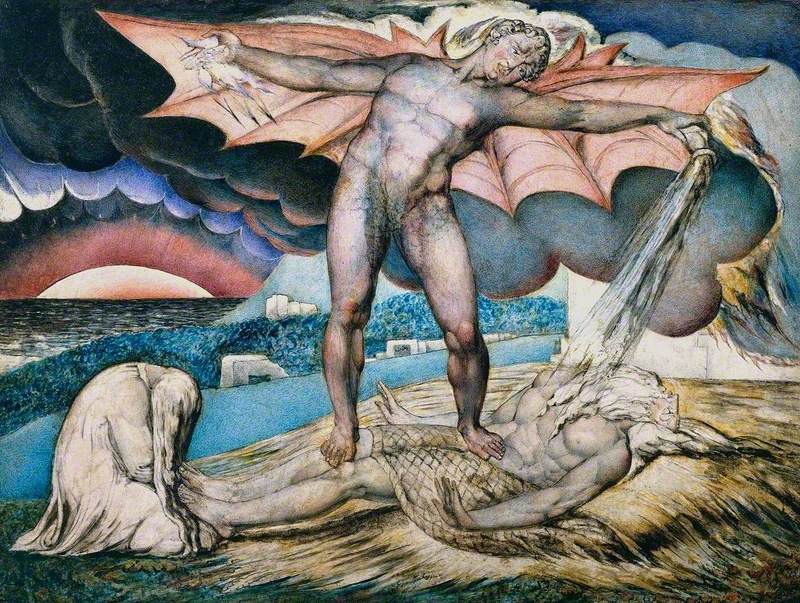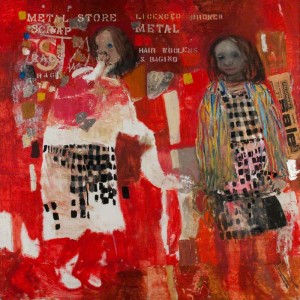We came to see you often, we Samson weans. To escape the boredom of the day or shelter from the dreich Glasgow sky in the cosy warmth of your round stove. I remember your studio filled always with the lovely, unfamiliar smell of turpentine and wax crayons, and the sweet-stale taste of the biscuits you offered.
'Aunty Joan'. You were our mother's age and fascinated us with your strange paint-spattered smocks, unruly crop of dark hair, and your clever hands – hands not chapped and red from washing like those hands of local women – that so deftly captured our likeness. For hours we sat, watching you work, marking out our image first on rough paper, then on canvas.
Children and Chalked Wall 3
1962–1963
Joan Kathleen Harding Eardley (1921–1963) 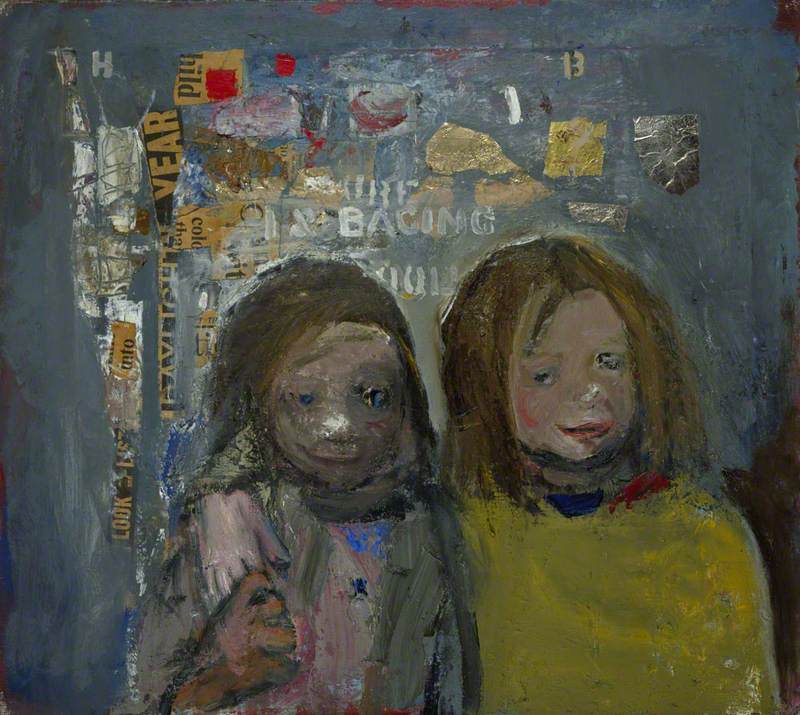
Your studio seemed much further than a staircase away from the crowded, dirty road below. Further still from the tiny two-bedroom tenement which the twelve of us shared. It was there that we returned to our mother every evening; would offer her the day's little crayon sketches and watch her feed them, gratefully, into the fire. Not because she did not appreciate your talent, but because the nights were too cold, the walls too thin, to allow her the luxury of sentiment.
But this painting, you kept. My sister and I bristled with pride to see our portrait propped on the back wall of your studio. We are locked in a tight embrace and laughing; the pose encapsulating that sort of playful camaraderie that characterised our Townhead streets. For, despite the harshness of people's lives and the crippling poverty, they were united by enduring warmth and kinship. A 'Glasgow spirit' that meant men on the brew still traded banter in the streets, and neighbours offered us what scraps they could when our own plates were empty. And you understood: captured that spirit in the sunshine yellow of my dress; the luminescent blue of our gaze; the wide pink smiles. We grip each other's hands with the fierce intimacy of sisterhood. My sister and I stand undefeated and cheerful against the dismal grey of the canvas, in which you saw the dingy backdrop of our young lives.
Your rough brushwork captures our ebullience, our energy, our temerity. I recall how often you implored us to 'stand at peace', while Mary and I squirmed restlessly on those long afternoons, dreaming of playing peever or hidey. Behind our figures, you pasted shards of newspapers and sweet wrappers salvaged from the pavements, stencilled lettering from street signs. You made us not simply models but people – conjured the landscape of our lives through the patchwork of detritus. I look, and am transported back to those city streets – the graffitied sandstone walls, yesterday's newspaper decaying in gutters, the glint of foil-wrapped sweets in my curled fist. You loved Glasgow as much as we did, understood the beauty in its debris, and made it a part of your work.
While your contemporaries followed fads, grappled with modernist ideals, you preferred to spend your days with us 'rough city kids'. But there was an integrity and vision within your work that meant it would endure long after those other fashions faded. Our 'Aunty Joan' would die tragically from breast cancer, less than a year after our portrait was completed. You would never see how Glasgow changed, the streets you painted now demolished. Never watch us grow up, raise families of our own. But through your work, we remain forever 'your Samson children' – young and exuberant, bearing testimony to the strength of the human spirit.
Aoife Hogan, first-place winner of Write on Art 2021, Years 12/13
Further reading
'Scottish national gallery reveals unknown Joan Eardley works', The Scotsman, 1st December 2016
Jan Patience, 'A journey in the footsteps of Joan Eardley', The Glasgow Herald, 7th January 2017
National Galleries Scotland's description of the painting
Frances Spalding, 'Joan Eardley: the forgotten artist who captured Scotland's life and soul', The Guardian, 10th February 2017
William Hardie, Scottish Painting – 1837 to the Present, Waverley, 2010
